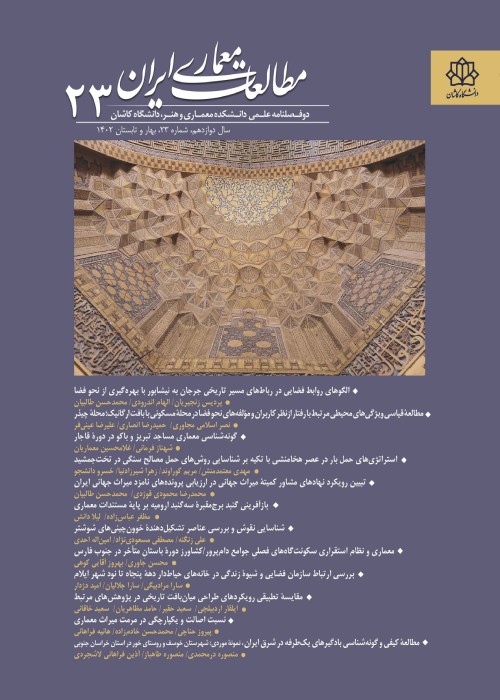A Theoretical Model for Neighborhood Studies in Residential Environments
Author(s):
Article Type:
Research/Original Article (دارای رتبه معتبر)
Abstract:
Nowadays, urban living is necessarily associated with neighboring groups of people. The historical experience of human habitation in different parts of the world is a testament to the above-mentioned. Accordingly, the study of the Neighbor Law in general and the laws of social relationships in residential environments, in particular, becomes necessary and relevant. The main purpose of the present article is to explain the influence of the physical environment on social relationships in a neighborhood, which is a matter of concern for residential planners and designers. For this purpose, the variables affecting neighbor relationships were identified and categorized by reviewing research sources, and next, the impact of these variables on each other and neighborhood relationships was determined by logical reasoning. The findings suggest that neighbor social relationships are primarily affected by individual and socio-economic characteristics of residents, such as personality traits, marital status, gender, length of residence, home ownership, ethnicity, and race. The physical characteristics of the environment can also facilitate or deter the formation and continuation of neighbor social relationships. The three main variables affecting neighbor social relationships are as follows: Totality of the Physical Environment (residential density and appearance); Public Space (size, shape, enclosure, floor and edge characteristics, and characteristics of local service facilities); and Residential Blocks (housing type, accessibility to and visibility of public space from residential blocks). On the other hand, since "meaning" is the mechanism of any individual’s relationship with the environment, people interact with each other according to the meaning of particular activities and physical characteristics of the environment. Accordingly, the impact of the characteristics of the environment (independent variables) on the neighbor social relationships (dependent variables) can be explained through meaning-related variables (mediating variables). Consequently, it is worth mentioning that the "cognitive qualities of the physical environment" impact the "structural and interactional aspects of neighboring" through "neighborhood attachment." Variable relationships are presented in a theoretical model which can be used by researchers studying neighbor social relationships in various socio-cultural contexts.
Keywords:
Language:
Persian
Published:
Journal of Iranian Architecture Studies, Volume:10 Issue: 20, 2022
Pages:
239 to 258
magiran.com/p2434127
دانلود و مطالعه متن این مقاله با یکی از روشهای زیر امکان پذیر است:
اشتراک شخصی
با عضویت و پرداخت آنلاین حق اشتراک یکساله به مبلغ 1,390,000ريال میتوانید 70 عنوان مطلب دانلود کنید!
اشتراک سازمانی
به کتابخانه دانشگاه یا محل کار خود پیشنهاد کنید تا اشتراک سازمانی این پایگاه را برای دسترسی نامحدود همه کاربران به متن مطالب تهیه نمایند!
توجه!
- حق عضویت دریافتی صرف حمایت از نشریات عضو و نگهداری، تکمیل و توسعه مگیران میشود.
- پرداخت حق اشتراک و دانلود مقالات اجازه بازنشر آن در سایر رسانههای چاپی و دیجیتال را به کاربر نمیدهد.
In order to view content subscription is required
Personal subscription
Subscribe magiran.com for 70 € euros via PayPal and download 70 articles during a year.
Organization subscription
Please contact us to subscribe your university or library for unlimited access!


